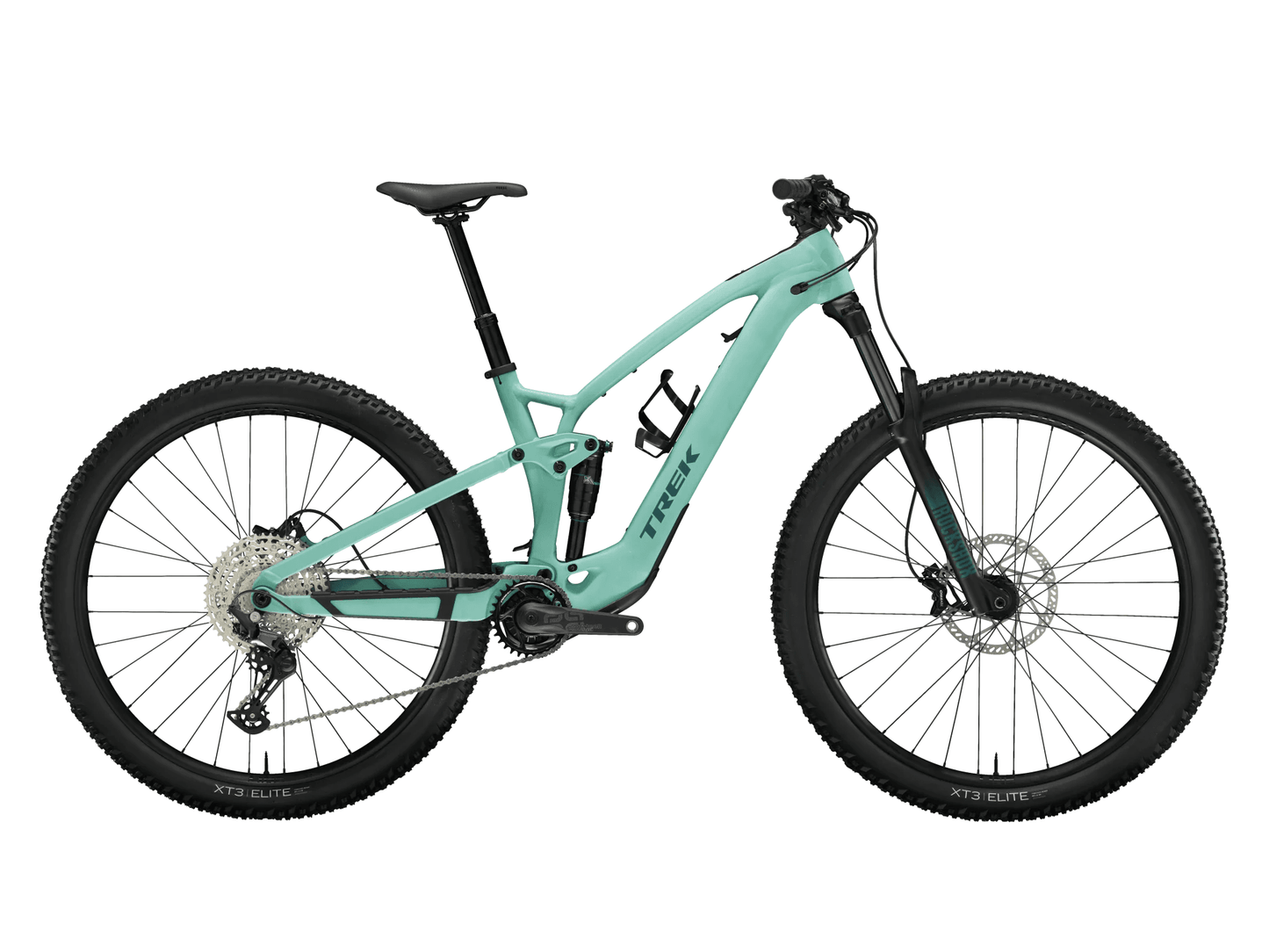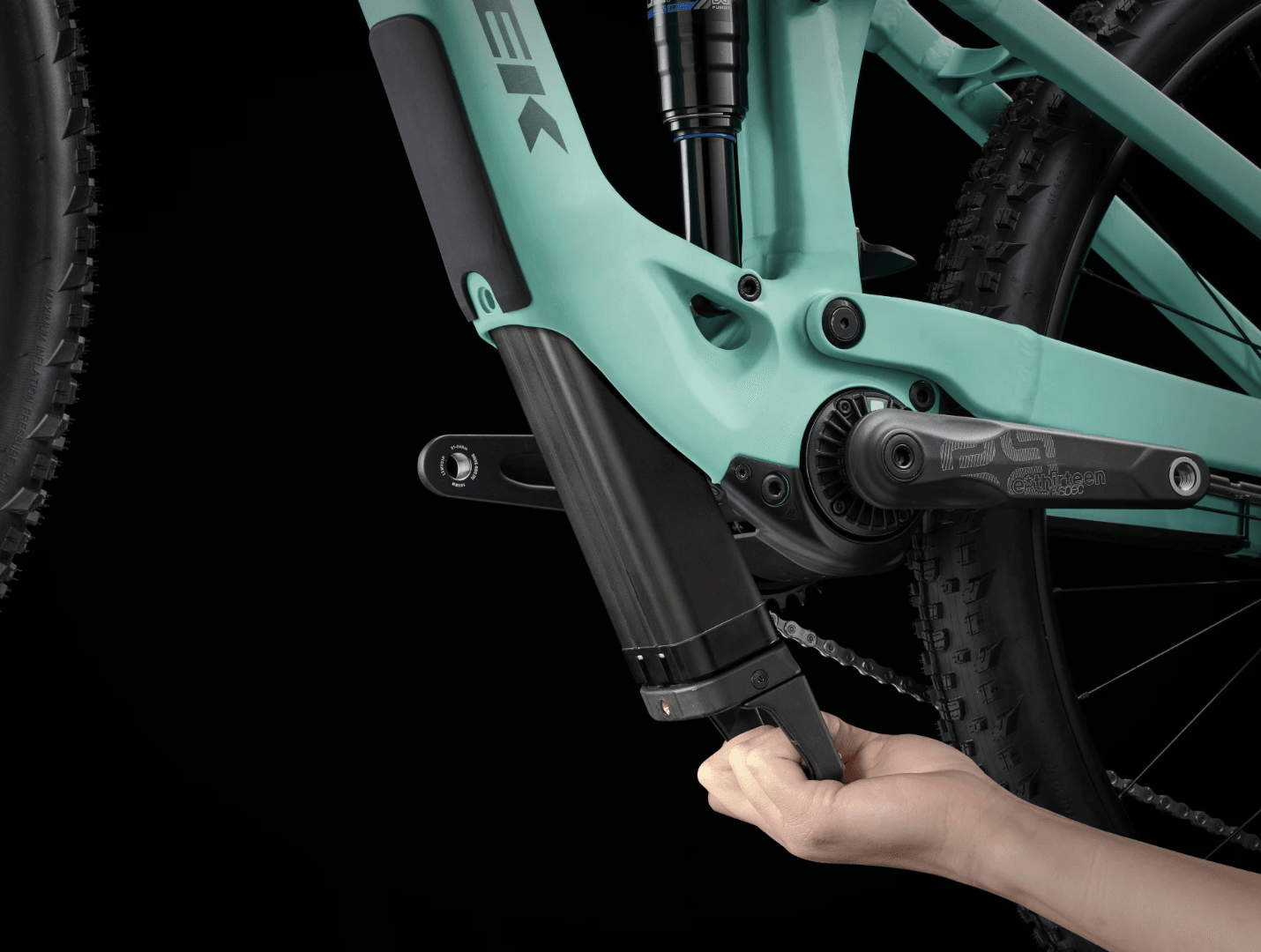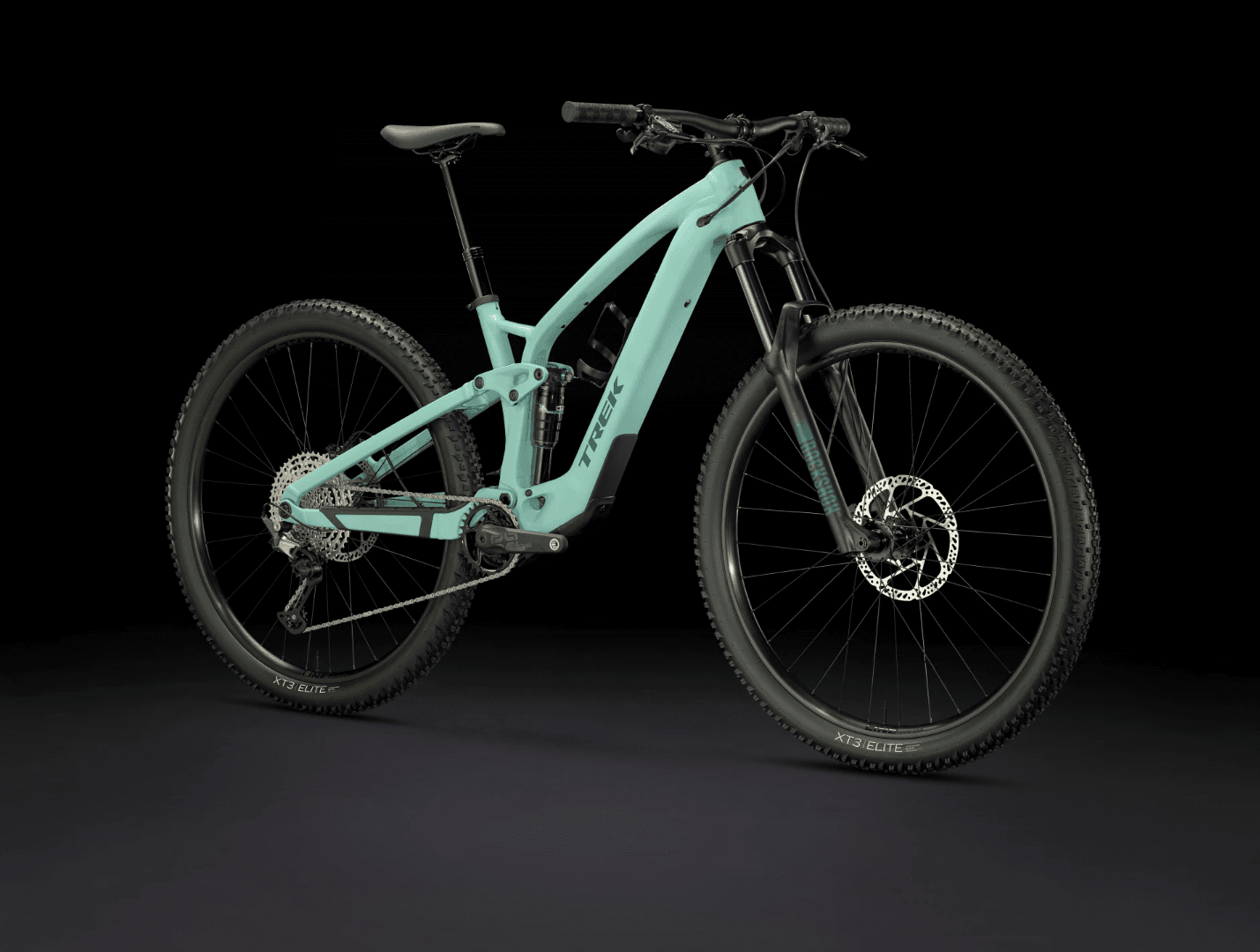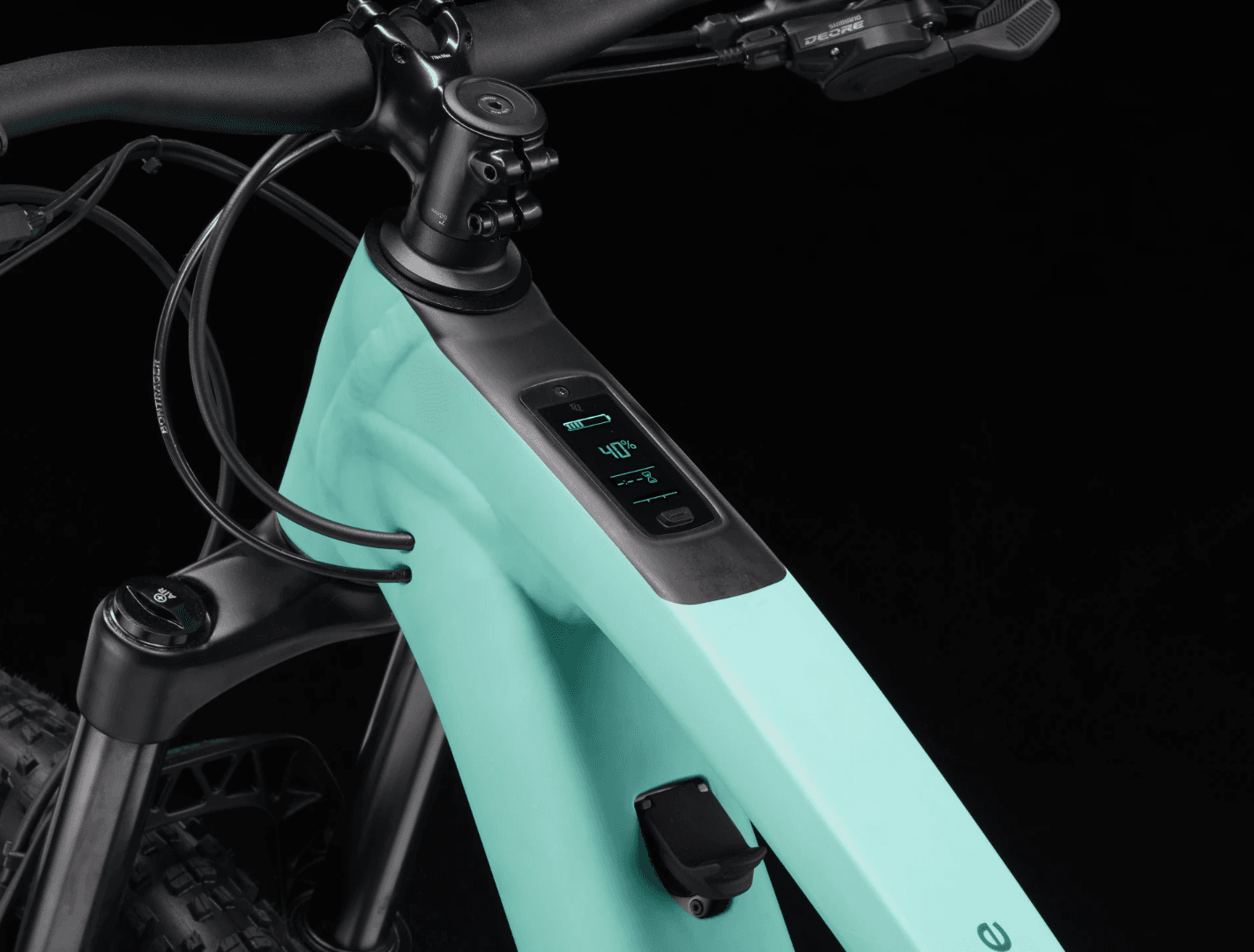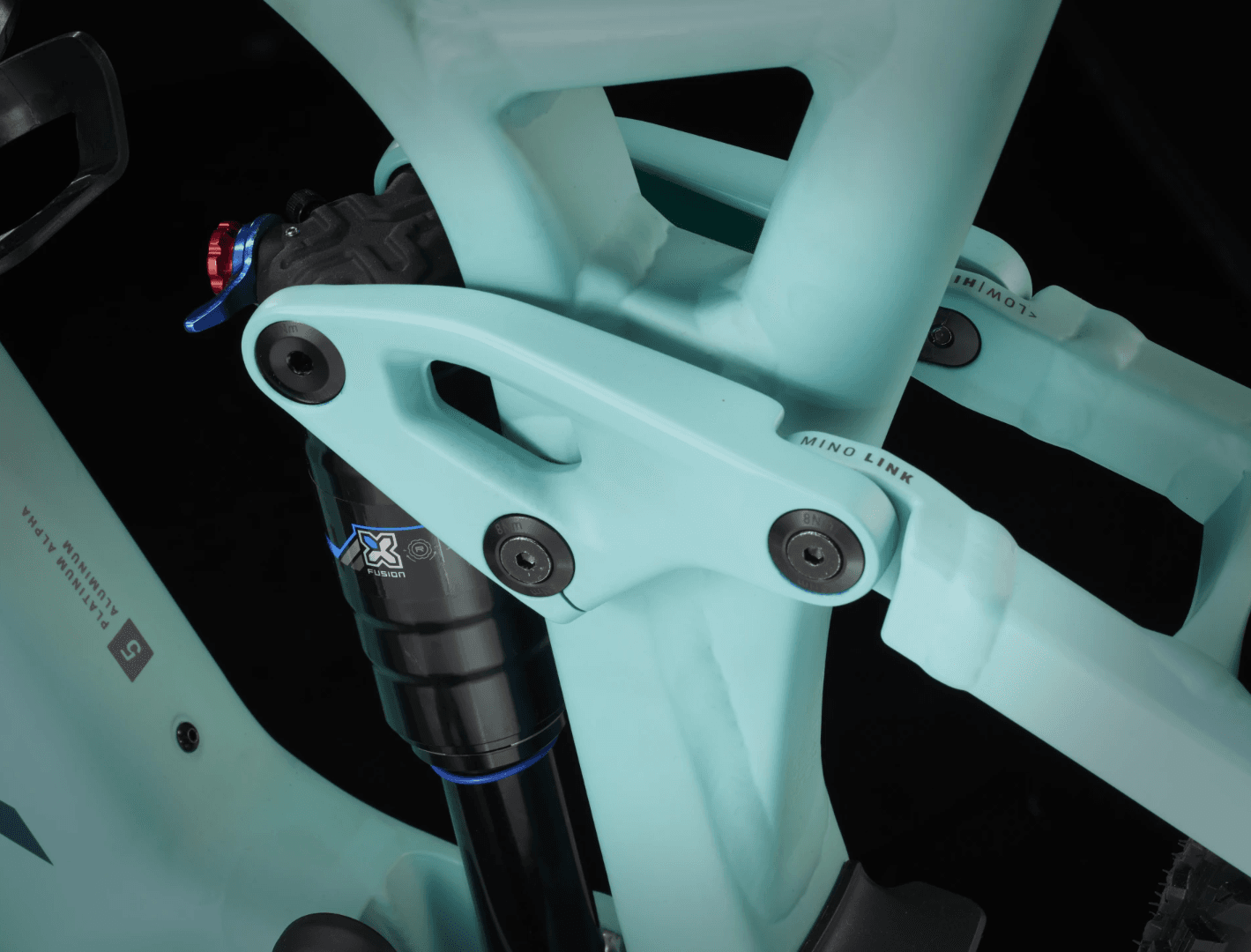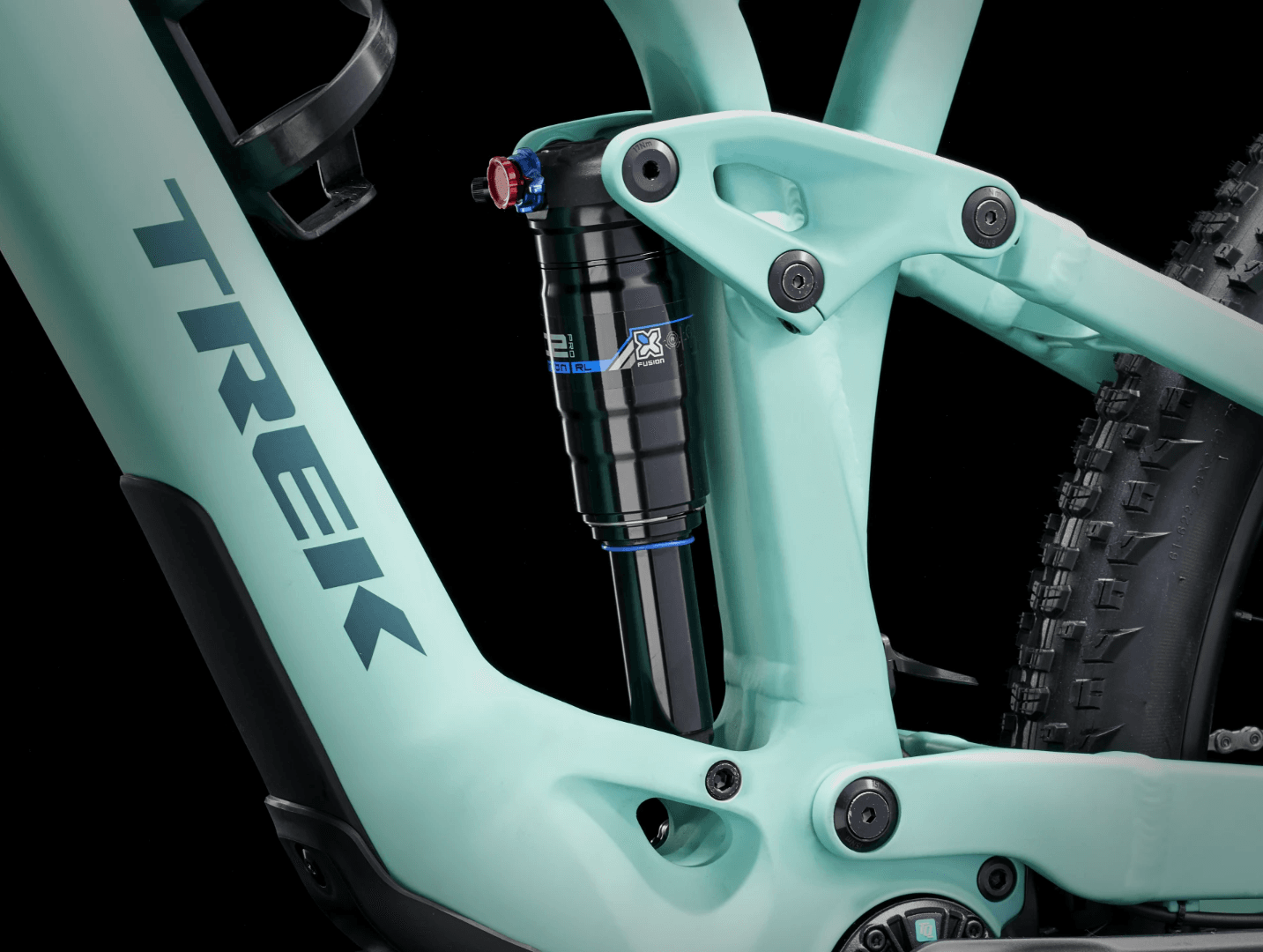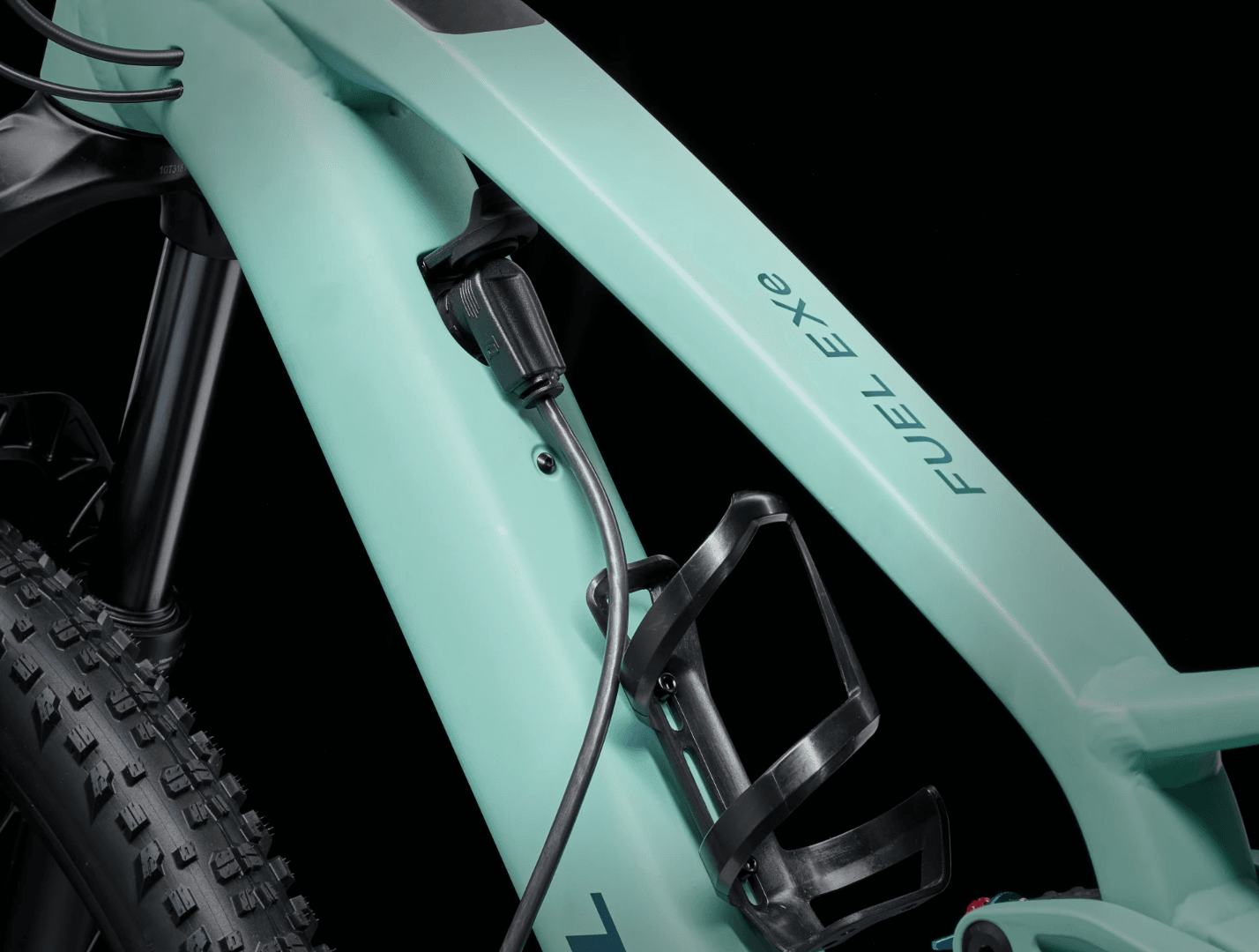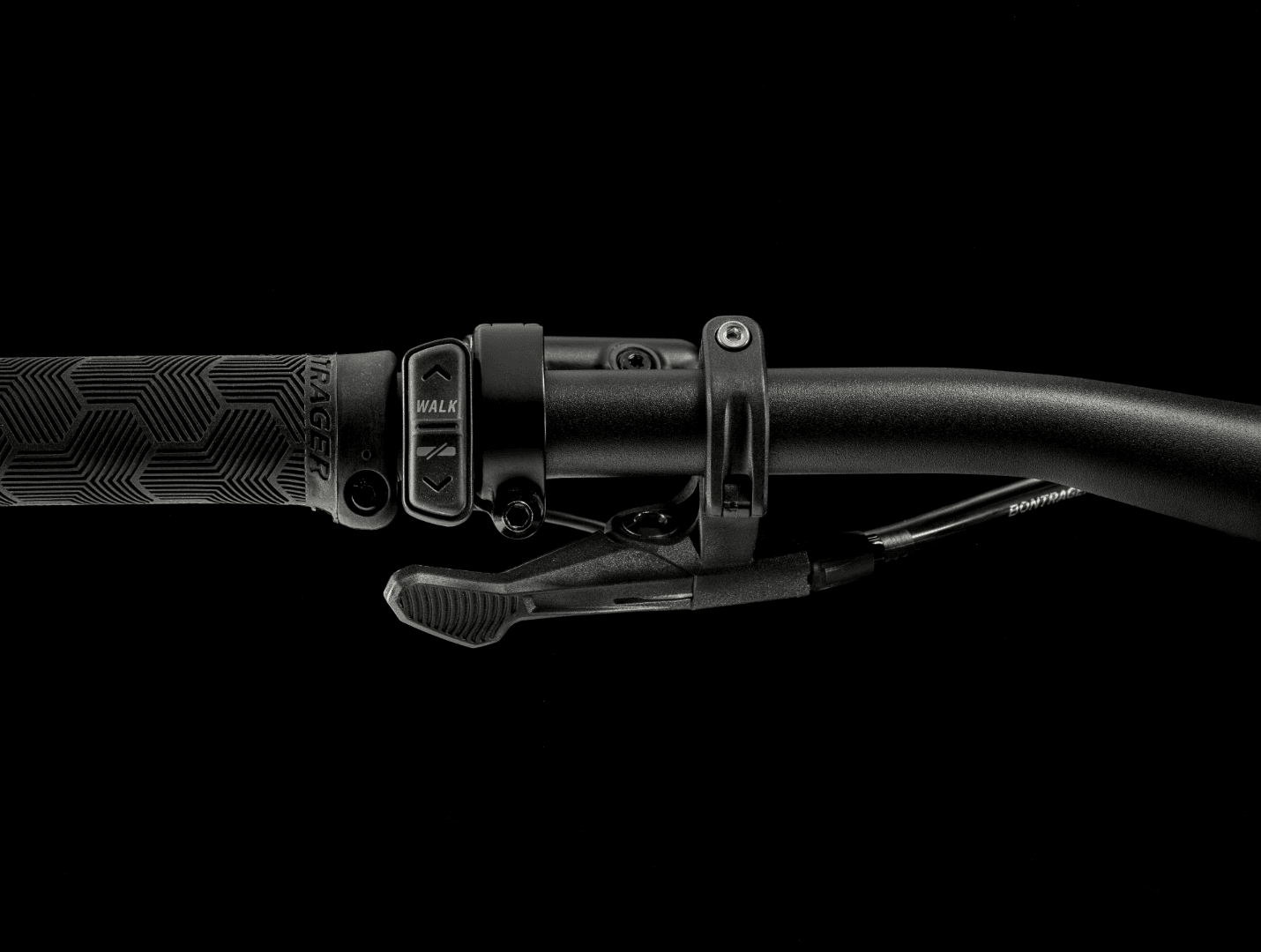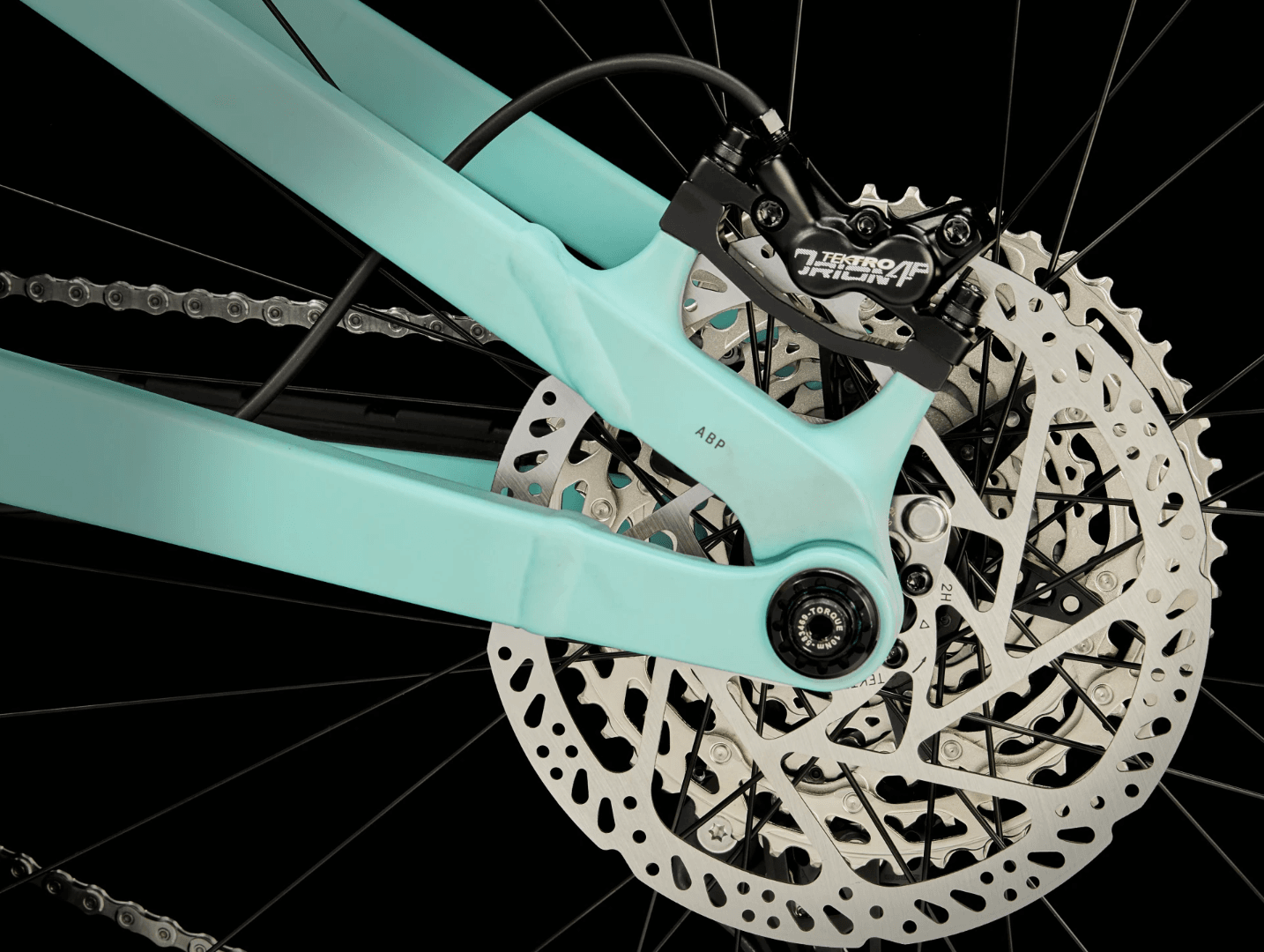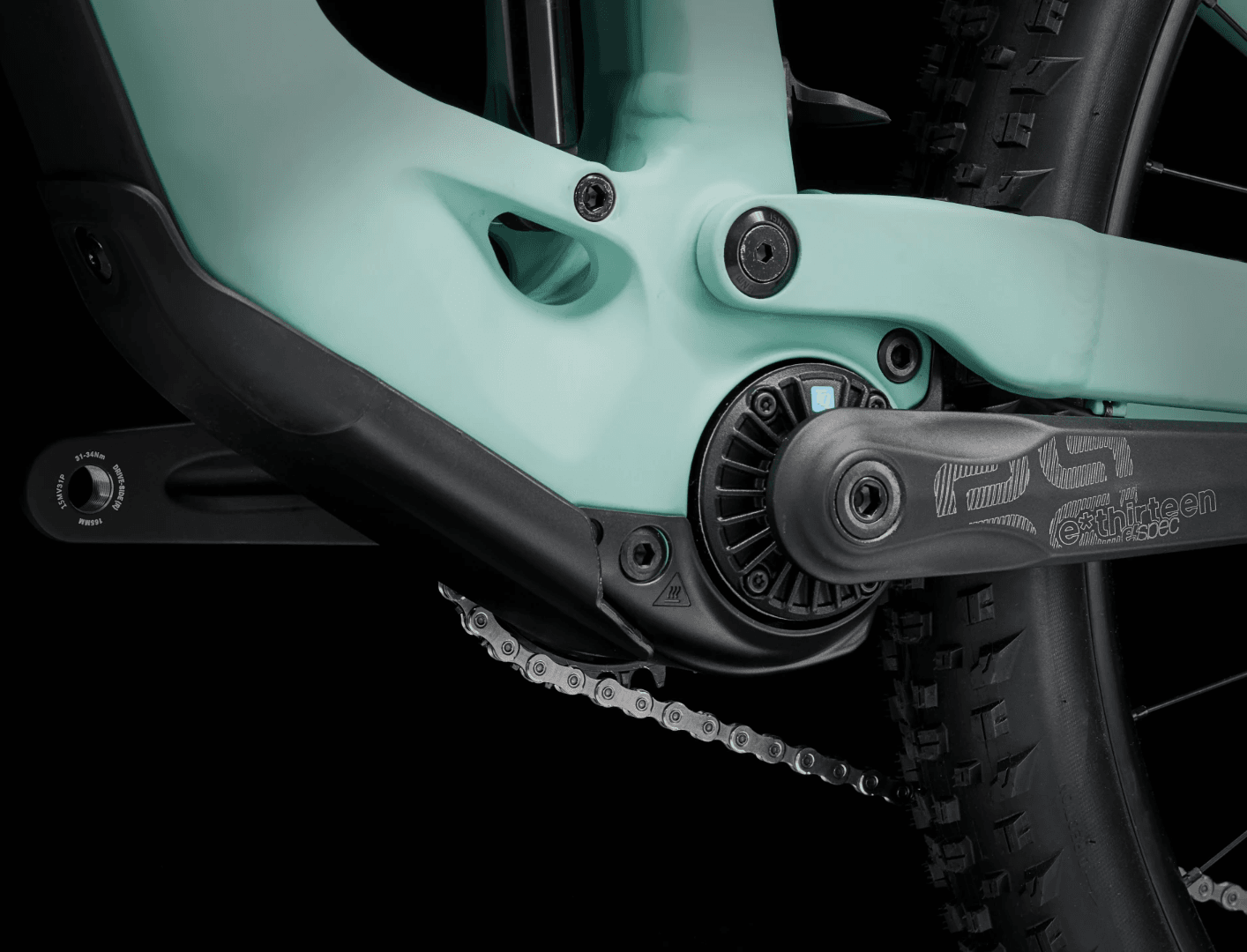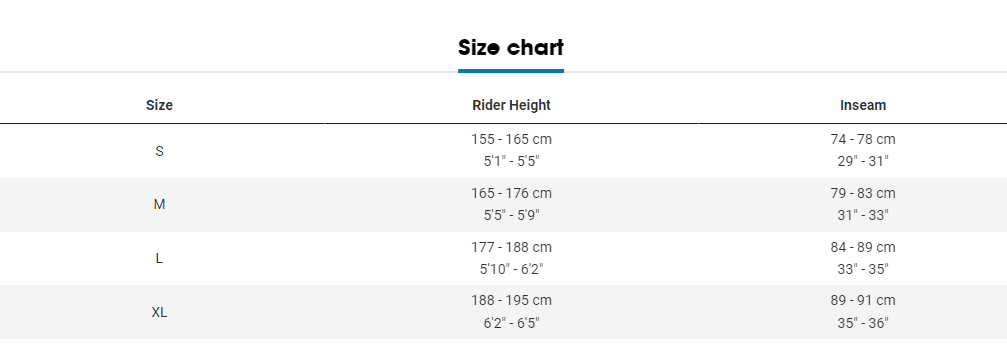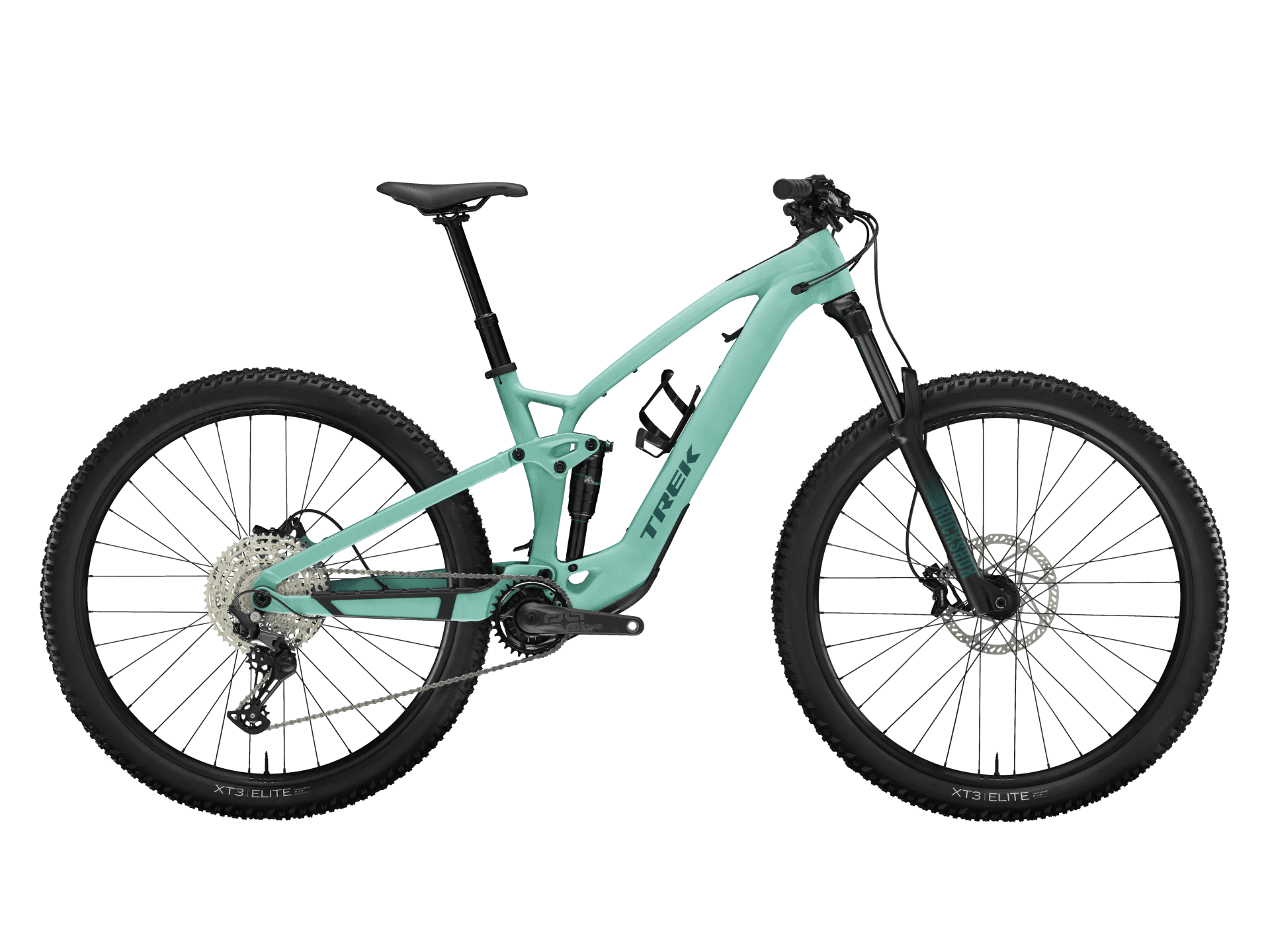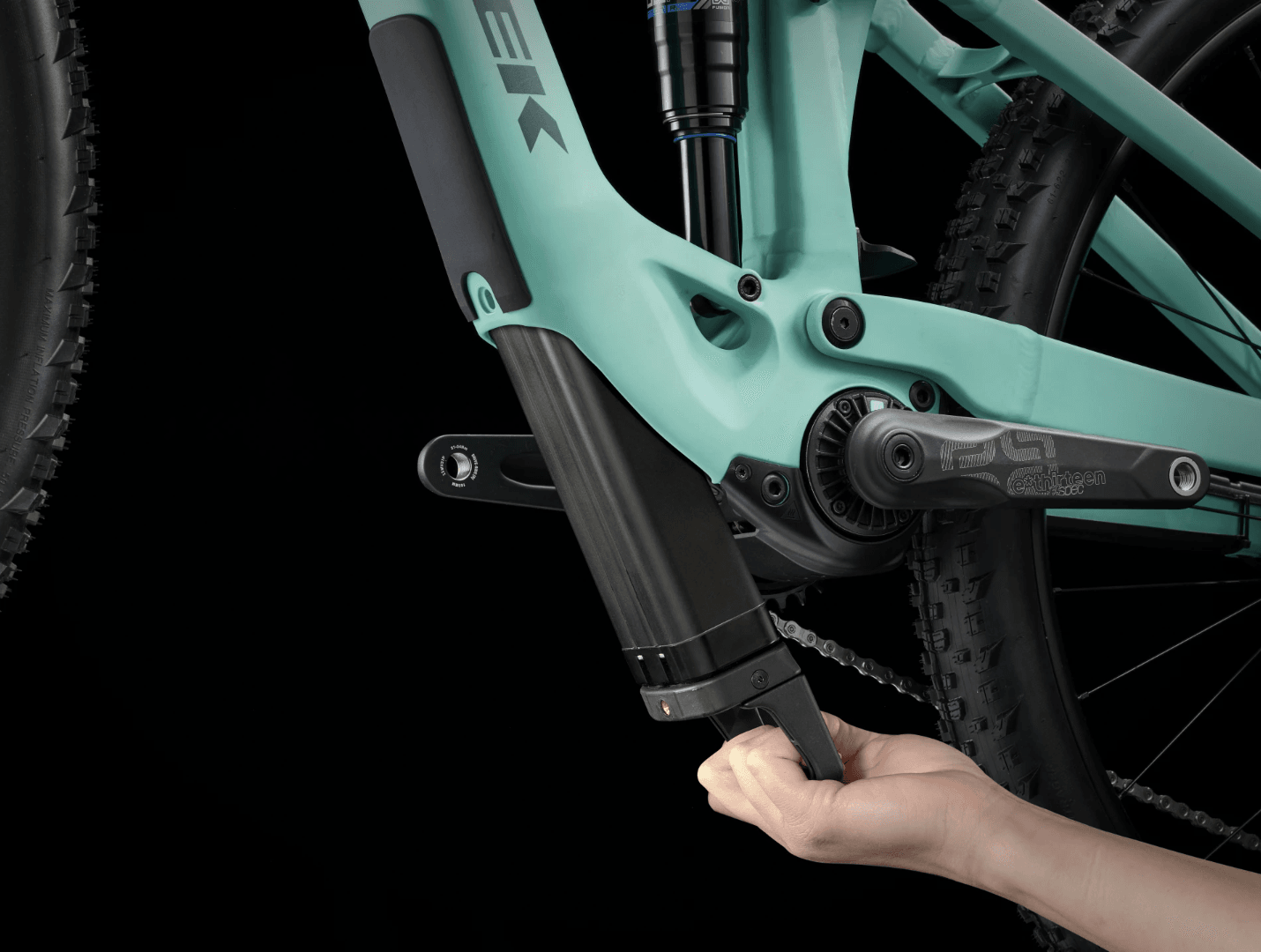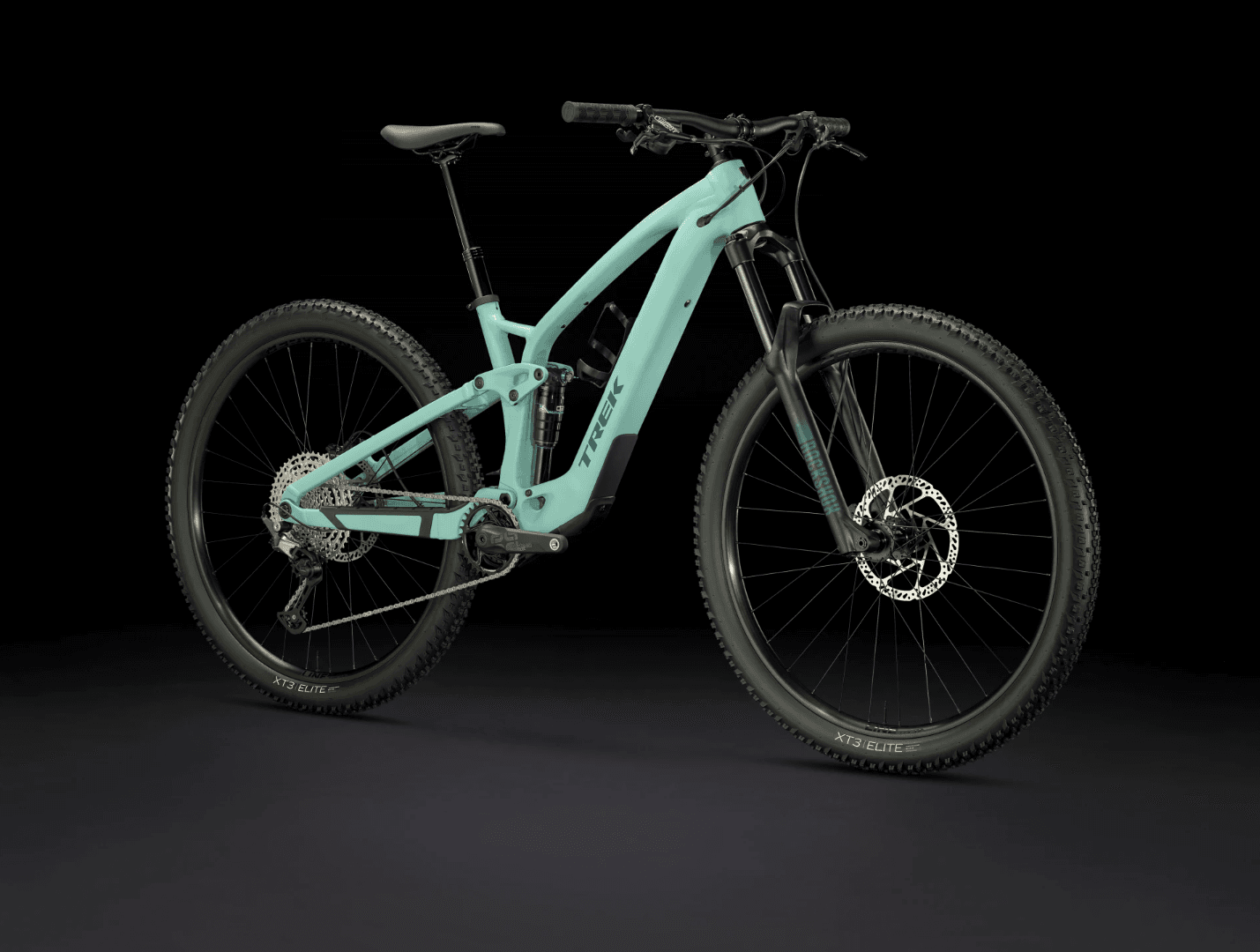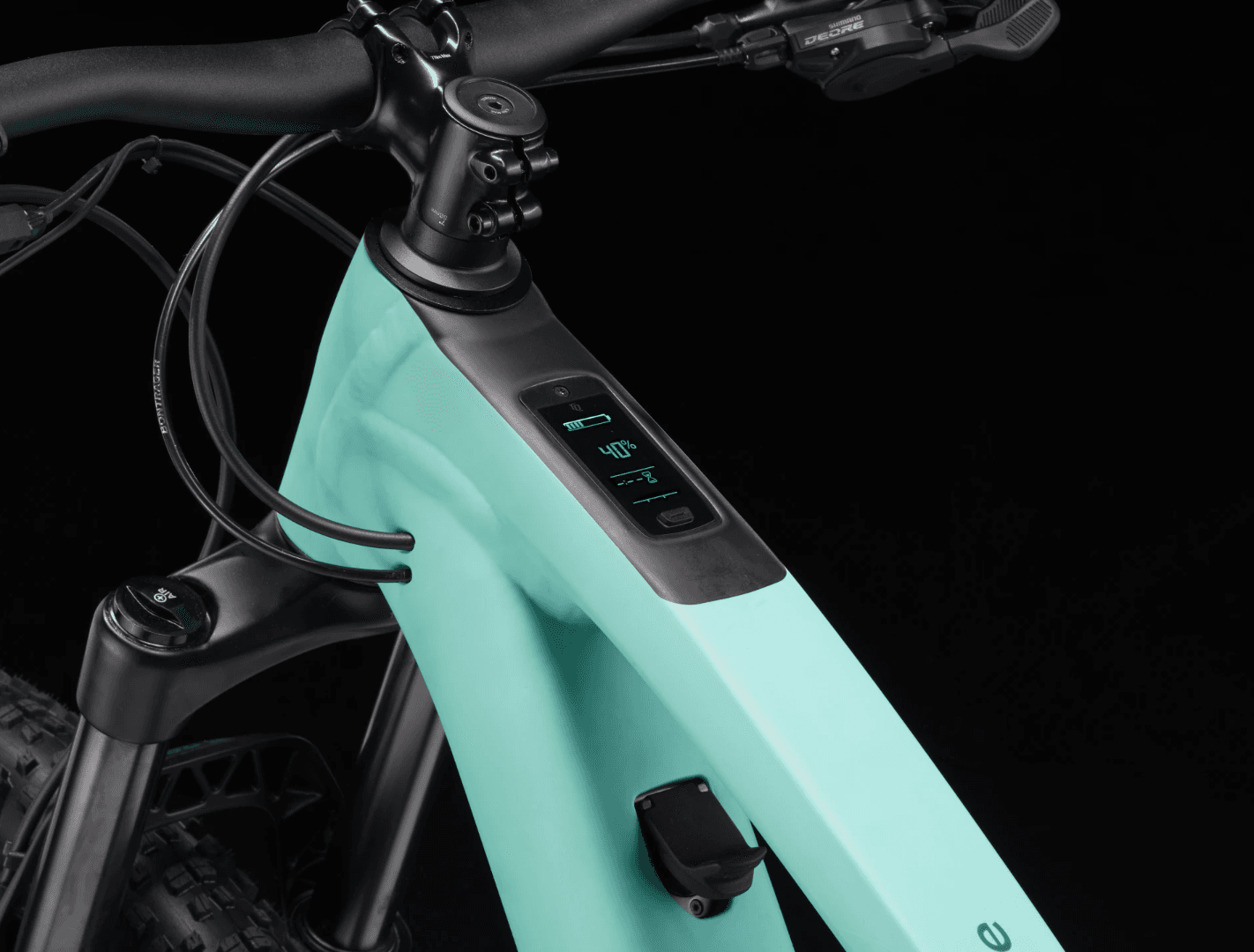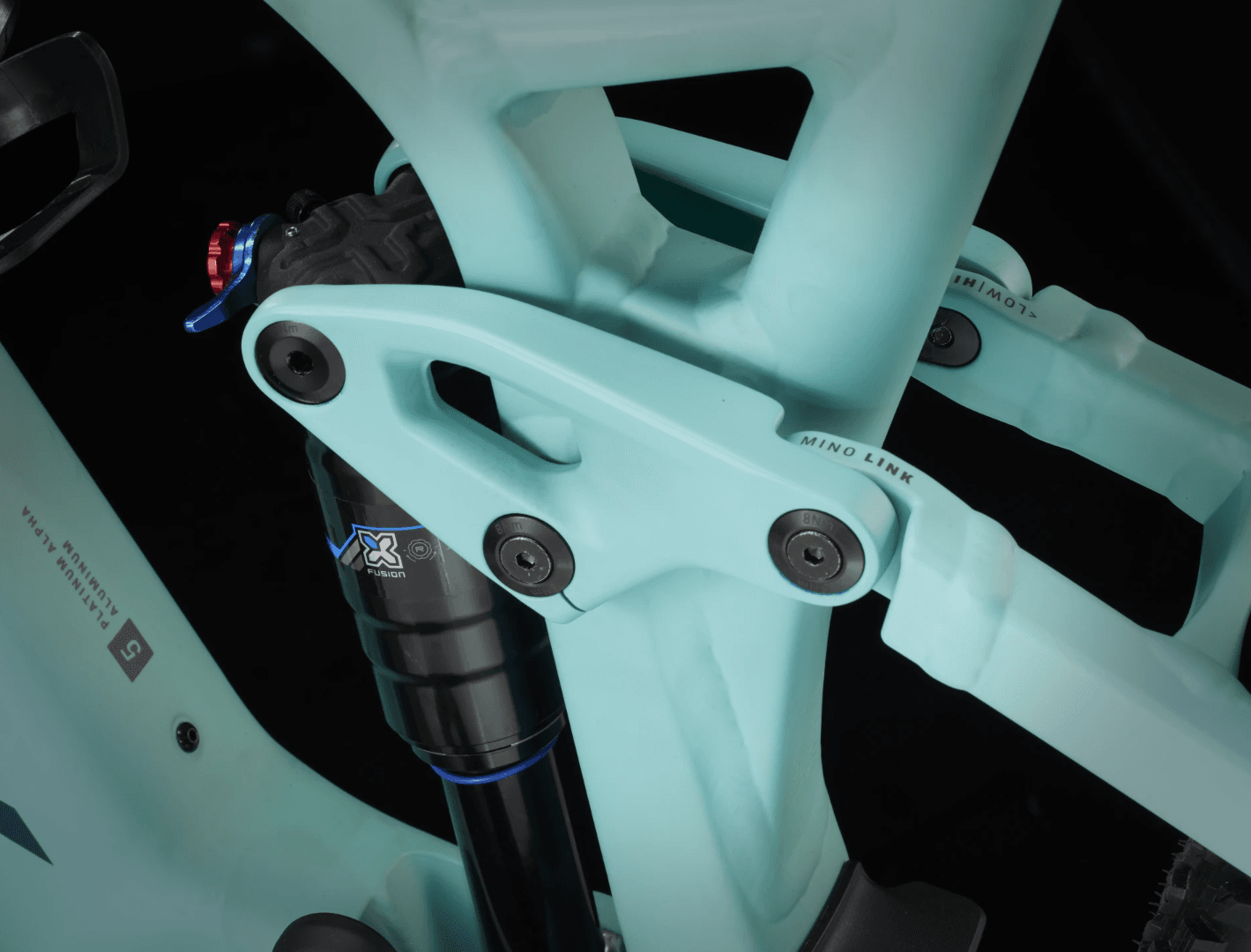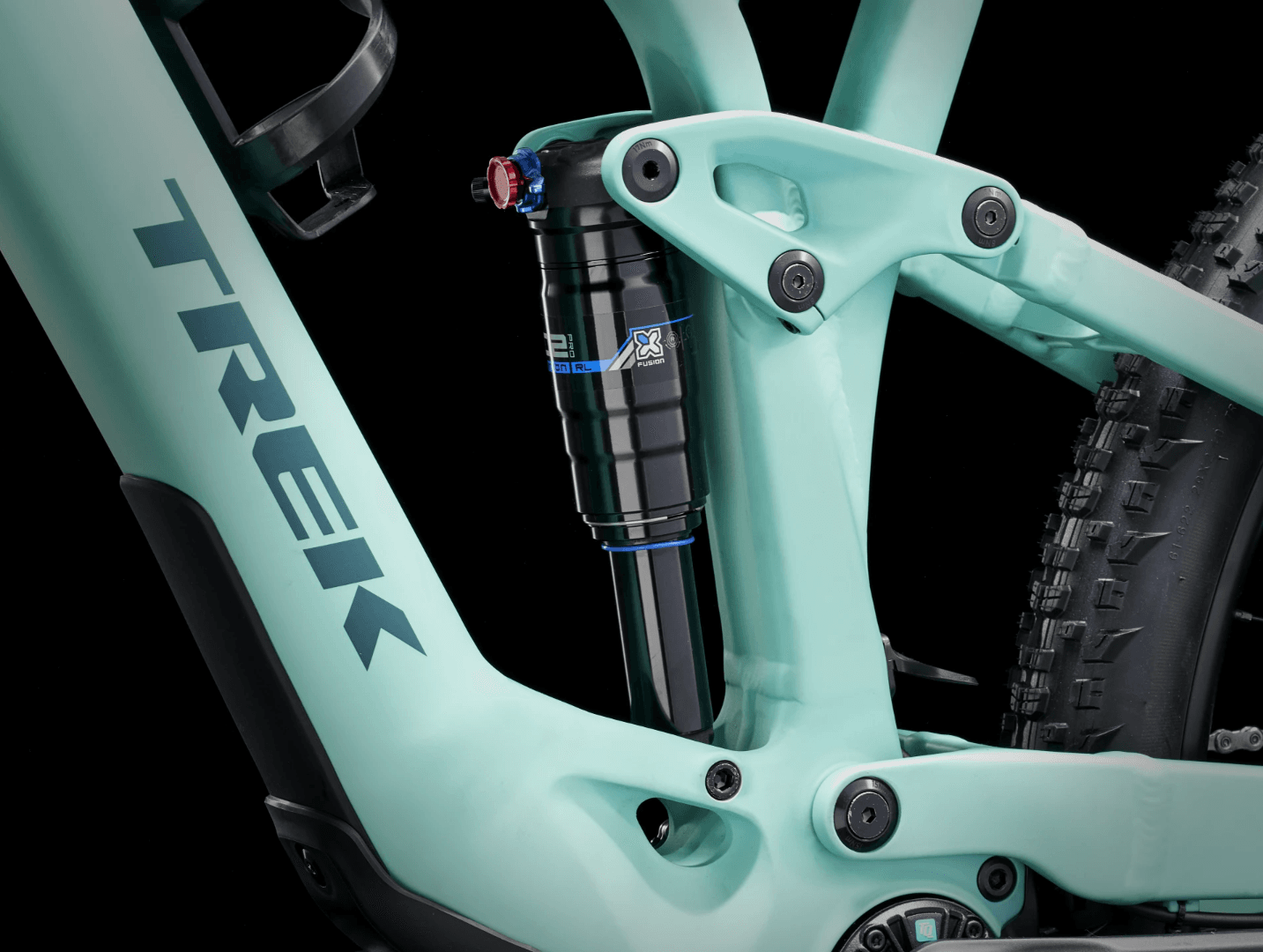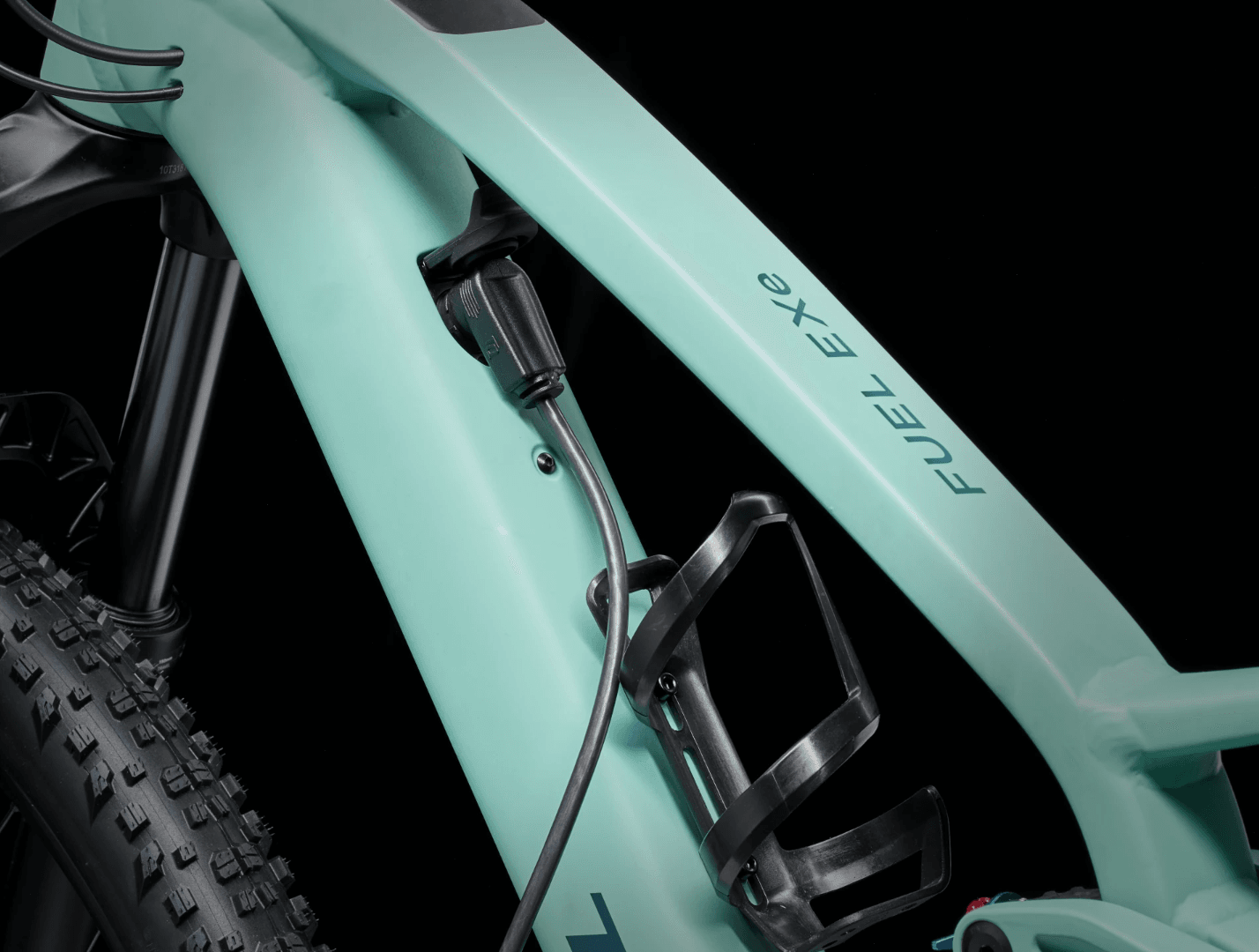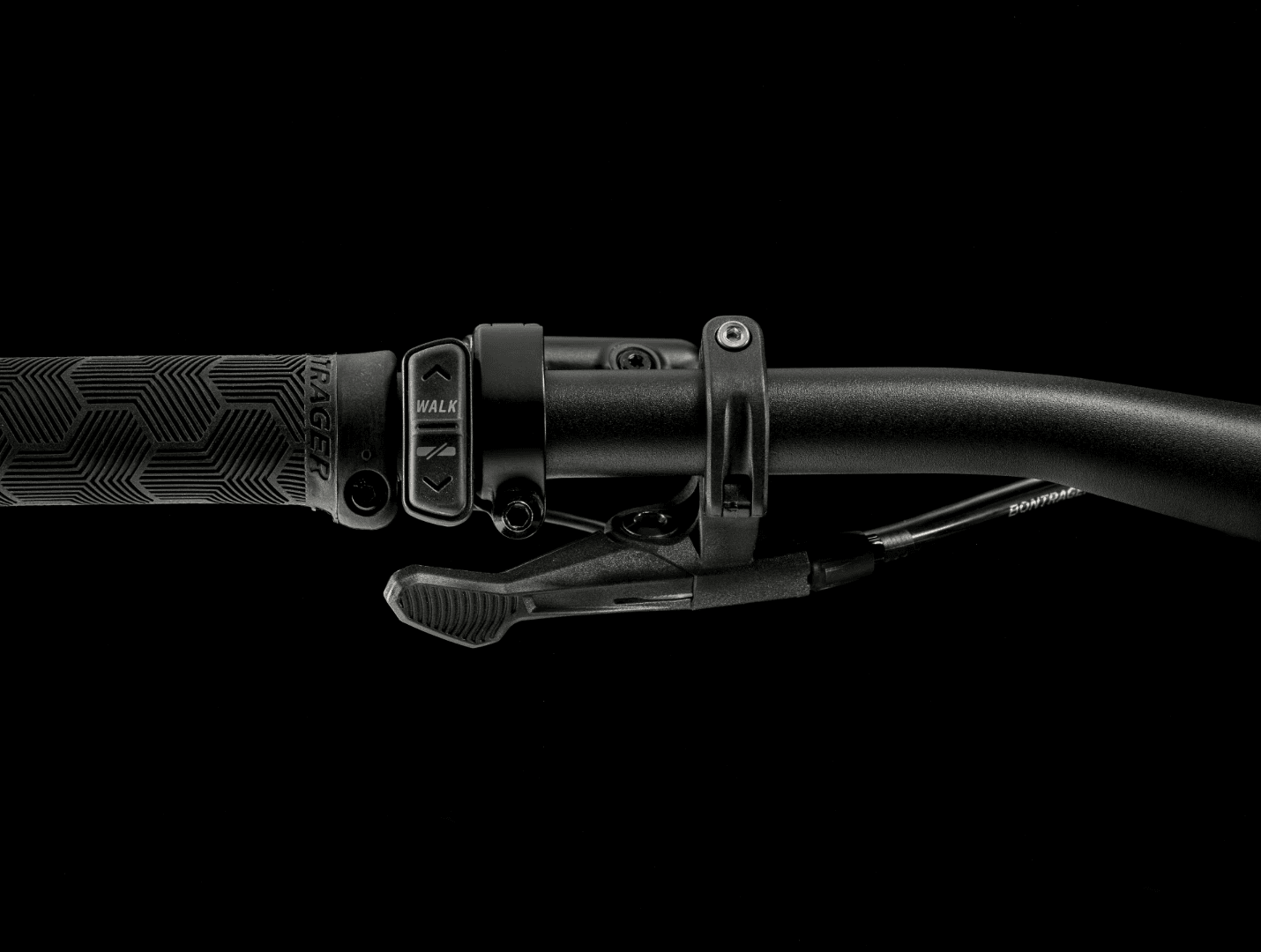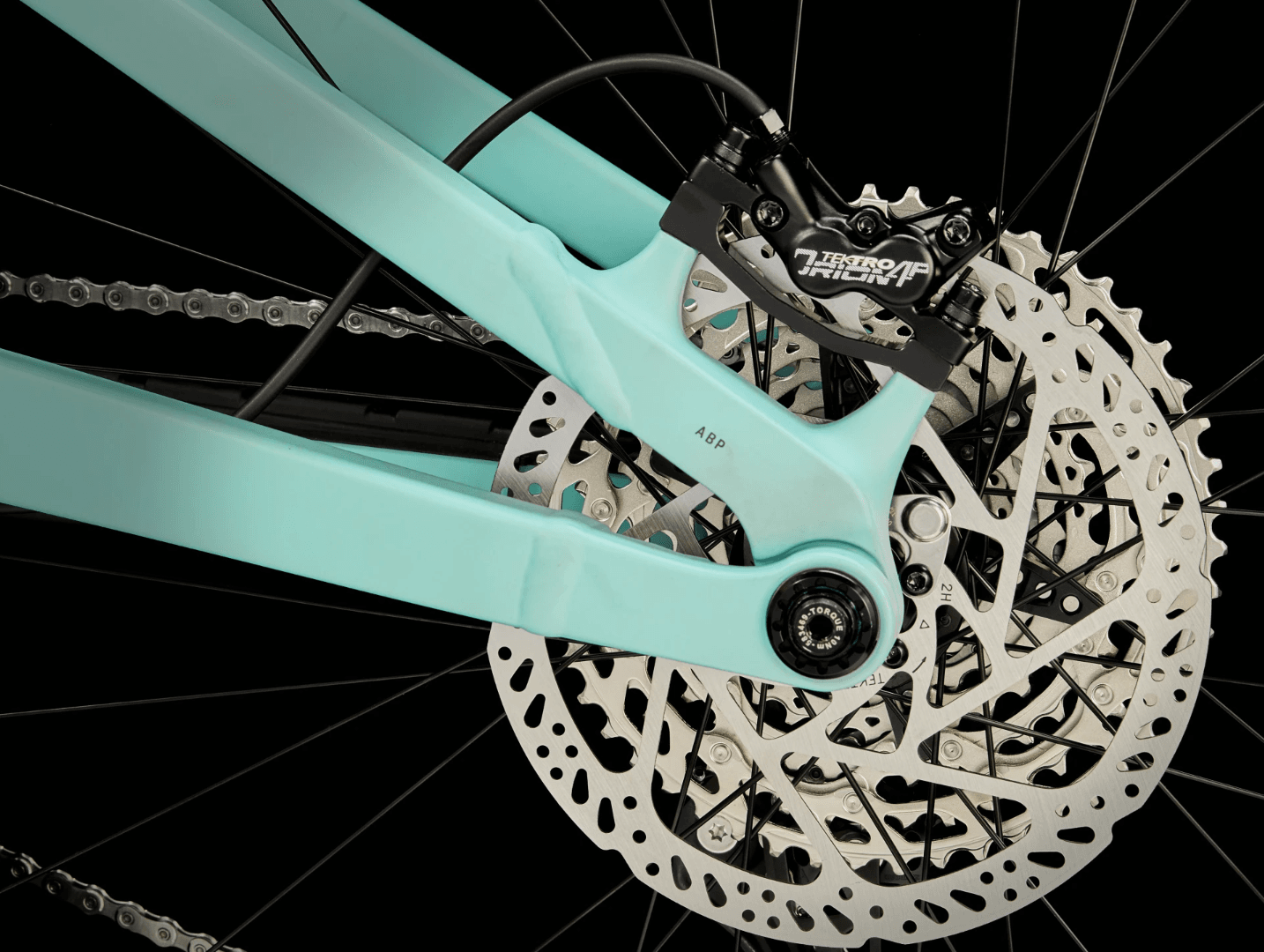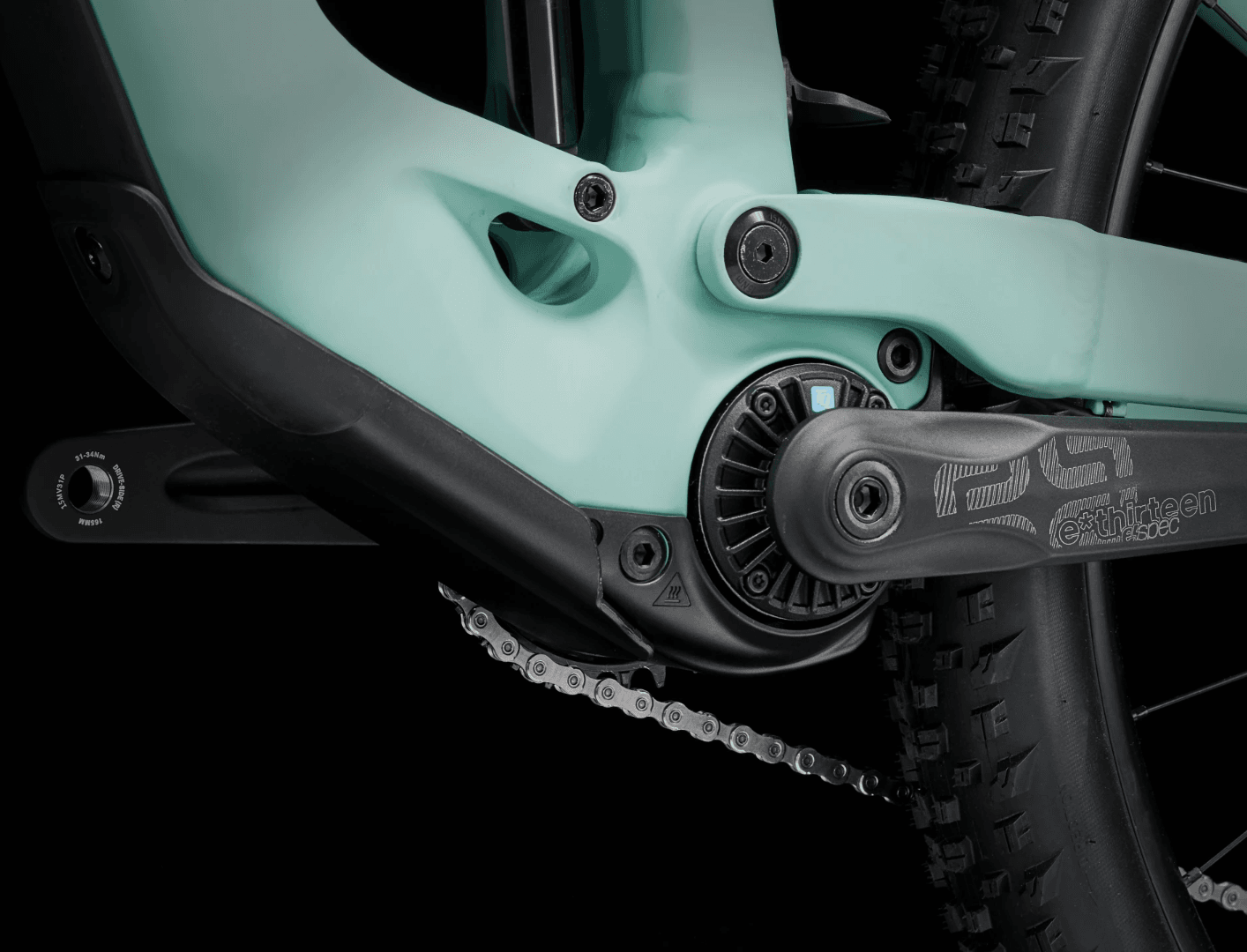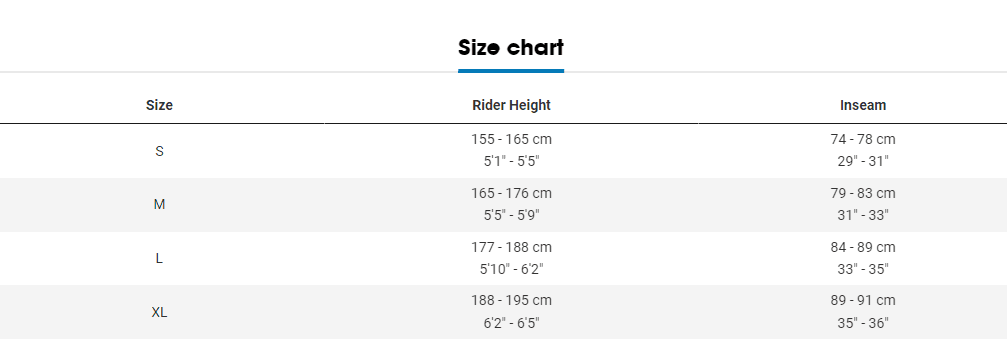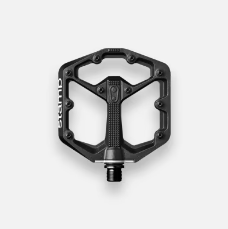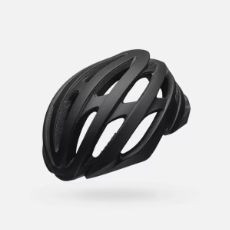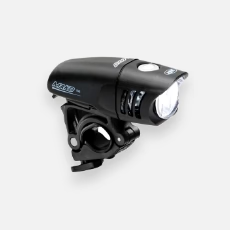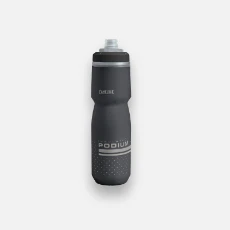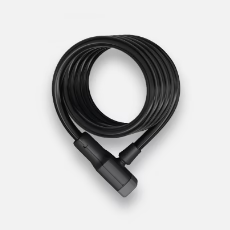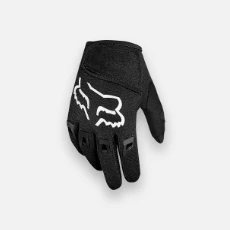TREK FUEL EXe 5 E-MTB BIKE 2025 MATTE BLUE SAGE
Product Details - Trek Fuel Exe 5 E-mtb Bike 2025 Matte Blue Sage
Product Details - Trek Fuel Exe 5 E-mtb Bike 2025 Matte Blue Sage
eBikes by their very nature can in the future require aftermarket updates and support. This cannot be supplied by All Terrain Cycles at distance; if required the work would have to be obtained from your local Brand Dealership, possibly at extra cost to yourself.
Your eBike will be delivered built, set up and updated.
Minimum personal assembly is required.
The Fuel EXe 5 is an aluminium electric mountain bike that brings all the tech of its carbon counterpart into a pocket-friendly package.
It boasts the same tiny-but-mighty drive system that quietly disappears under you, plus a sleek display and remote. But what really makes this bike excel is its true trail bike feel that handles just like a traditional mountain bike, just with a little extra power.
Key Features
- Brand New TQ Battery and Motor: The tiny-but-mighty TQ motor is tuned for the trail, keeping things quiet so you can stay in the moment
- Range-extender compatibility: If you want to ride further you can easily add a range extender that fits neatly in your bottle cage
- 12-Speed Shimano Deore Gears: Perfect for all terrain
Specification
- Frame: Alpha Platinum Aluminium, removable battery, internal routing, alloy rocker link, 34.9 mm seat tube, upper chain guide mount, 55 mm chain line, Mino Link, ABP, Boost148, UDH, 140 mm travel
- Rear Shock: X-Fusion Pro 2, 2-position damper, 205 mm x60 mm
- Fork: RockShox Recon Silver, Solo Air spring, Motion Control damper, lockout, tapered steerer, 42 mm offset, Boost110, Maxle Stealth, 150 mm travel
- Motor: TQ-HPR50, 50 Nm, 250 watt maximum continuous rated power, 300 watt peak power
- Controller: TQ LED display with Bluetooth & ANT+ connectivity
- Battery: TQ 360Wh
- Charger: TQ
- Gear Shifters: Shimano Deore M6100, 12-speed
- Chainset: E*thirteen E*spec Plus, 32T, 165 mm length
- Chainrings: E*thirteen E*spec, 32T steel ring, 55 mm chain line
- Rear Cassette: Shimano Deore M6100, 10-51, 12-speed
- Chain: Shimano Deore M6100, 12-speed
- Front Derailleur: N/A
- Rear Derailleur: Shimano Deore M6100, long cage
- Bottom Bracket: N/A
- Pedals: Not supplied
- Rims: Bontrager Line TLR 30, Tubeless-Ready, 32-hole, Presta valve
- Front Hub: Bontrager sealed bearing, alloy axle, 6-bolt, Boost110, 15 mm thru axle
- Rear Hub: Bontrager alloy, sealed bearing, alloy axle, 6-bolt, Shimano MicroSpline freehub, Boost148, 12 mm thru axle
- Front Tyre: Bontrager XT3 Elite, wire bead, 60 tpi, 29 x 2.40"
- Rear Tyre: Bontrager XT3 Elite, wire bead, 60 tpi, 29 x 2.40"
- Brakes: Tektro HD-M745 4-piston hydraulic disc
- Handlebars: Bontrager Rhythm Comp, alloy, 31.8 mm, 15 mm rise, 750mm width
- Handlebar Grips: Bontrager XR Trail Comp, nylon lock-on
- Headset: Knock Block Integrated, cartridge bearing, 1-1/8"" top, 1.5"
- Stem: Bontrager alloy, 31.8 mm, Blendr-compatible, 7-degree, 50 mm length
- Saddle: Bontrager Arvada, steel rails, 138 mm width
- Seatpost: TranzX JD-YSI-22PLQ, 100 - 170 mm travel, internal routing, 34.9 mm, 346 - 497mm length
- Accessories: N/A
- Weight: M- 20.80 kg / 45.86 lbs (with TLR sealant, no tubes)
We reserve the right to make changes to the product information contained on this site at any time without notice, including with respect to equipment, specifications, models, colours, materials and pricing. Due to supply chain issues, compatible parts may be substituted at any time without notice.
Bike and frame weights are based on pre-production painted frames at time of publication. Weights may vary in final production.
How we Build & Pack Your Bike
How we Build & Pack Your Bike
Aftercare
Aftercare
At All Terrain Cycles, we want you to ride with confidence every time. To ensure your bike or e-bike stays in peak condition, here are some essential safety and maintenance tips.
Bicycle Safety
Always wear a helmet – Safeguard against head injuries by using a properly fitted, safety-certified helmet.
Perform pre-ride checks – Before each ride, verify that brakes, tyres, and gears are in good working order.
Stay visible – Utilise lights and reflective gear when cycling in low-light conditions.
Follow road rules – Ride responsibly and remain aware of your surroundings.
Aftercare for Your New Bike Initial Check-Up (First 50-100 miles)
Gear Adjustment – New cables may stretch slightly; have a qualified mechanic check and adjust them.
Brake & Wheel Check – Inspect brakes for wear and ensure wheels are aligned properly.
Lubrication – Apply chain oil and check bolt tightness to maintain smooth performance.
Tyre Pressure – Regularly monitor to prevent flats and enhance efficiency.
Pedals - Ensure pedals are still tight and correctly fitted.
Routine Maintenance (Every Few Weeks)
Chain Care – Clean and lubricate your chain to minimise wear and prolong its life.
Brake Safety – Check brake pads and responsiveness before each ride.
Tyre Inspection – Look for punctures and ensure correct air pressure.
Handlebar & Stem Alignment – Confirm they are tight and secure to prevent instability.
Frame Safety Check – Look for any signs of damage or cracks.
Pedals - Ensure pedals are still tight and correctly fitted.
Professional Check-Ups
Have your bike serviced at least once a year, or more frequently if you ride often.
Aftercare for Your New Electric Bicycle (e-Bike) Initial Check-Up (First 50-100 miles)
Battery Care – Fully charge your battery (if required) before the first ride and store it in a dry, moderate-temperature environment.
Avoid Overcharging – Unplug the charger once fully charged to extend battery life.
Pedals - Ensure pedals are still tight and correctly fitted.
Routine e-Bike Maintenance (Every Few Weeks)
Motor Inspection – Listen for unusual noises and ensure smooth operation.
Battery & Connection Checks – Inspect cables and connectors for dirt, moisture, or damage.
Pedals - Ensure pedals are still tight and correctly fitted.
Seasonal e-Bike Maintenance
Check Electrical Components – Ensure wires and connections are clean and secure.
Professional Servicing – Have your e-bike inspected at least once a year or every 500-1000 miles for optimal performance.
By following these aftercare guidelines, you’ll help ensure that your bicycle runs smoothly, lasts longer, and remains a joy to ride. Stay safe and enjoy the ride!
If you have any problems or concerns: Contact All Terrain Customer Services on 01274 588488 or email sales@allterraincycles.co.uk
You Might Be Interested In
- SKU: 5297853
- EPOS Code:



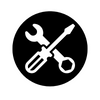

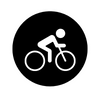
Product Description
Product Description
eBikes by their very nature can in the future require aftermarket updates and support. This cannot be supplied by All Terrain Cycles at distance; if required the work would have to be obtained from your local Brand Dealership, possibly at extra cost to yourself.
Your eBike will be delivered built, set up and updated.
Minimum personal assembly is required.
The Fuel EXe 5 is an aluminium electric mountain bike that brings all the tech of its carbon counterpart into a pocket-friendly package.
It boasts the same tiny-but-mighty drive system that quietly disappears under you, plus a sleek display and remote. But what really makes this bike excel is its true trail bike feel that handles just like a traditional mountain bike, just with a little extra power.
Key Features
- Brand New TQ Battery and Motor: The tiny-but-mighty TQ motor is tuned for the trail, keeping things quiet so you can stay in the moment
- Range-extender compatibility: If you want to ride further you can easily add a range extender that fits neatly in your bottle cage
- 12-Speed Shimano Deore Gears: Perfect for all terrain
Specification
- Frame: Alpha Platinum Aluminium, removable battery, internal routing, alloy rocker link, 34.9 mm seat tube, upper chain guide mount, 55 mm chain line, Mino Link, ABP, Boost148, UDH, 140 mm travel
- Rear Shock: X-Fusion Pro 2, 2-position damper, 205 mm x60 mm
- Fork: RockShox Recon Silver, Solo Air spring, Motion Control damper, lockout, tapered steerer, 42 mm offset, Boost110, Maxle Stealth, 150 mm travel
- Motor: TQ-HPR50, 50 Nm, 250 watt maximum continuous rated power, 300 watt peak power
- Controller: TQ LED display with Bluetooth & ANT+ connectivity
- Battery: TQ 360Wh
- Charger: TQ
- Gear Shifters: Shimano Deore M6100, 12-speed
- Chainset: E*thirteen E*spec Plus, 32T, 165 mm length
- Chainrings: E*thirteen E*spec, 32T steel ring, 55 mm chain line
- Rear Cassette: Shimano Deore M6100, 10-51, 12-speed
- Chain: Shimano Deore M6100, 12-speed
- Front Derailleur: N/A
- Rear Derailleur: Shimano Deore M6100, long cage
- Bottom Bracket: N/A
- Pedals: Not supplied
- Rims: Bontrager Line TLR 30, Tubeless-Ready, 32-hole, Presta valve
- Front Hub: Bontrager sealed bearing, alloy axle, 6-bolt, Boost110, 15 mm thru axle
- Rear Hub: Bontrager alloy, sealed bearing, alloy axle, 6-bolt, Shimano MicroSpline freehub, Boost148, 12 mm thru axle
- Front Tyre: Bontrager XT3 Elite, wire bead, 60 tpi, 29 x 2.40"
- Rear Tyre: Bontrager XT3 Elite, wire bead, 60 tpi, 29 x 2.40"
- Brakes: Tektro HD-M745 4-piston hydraulic disc
- Handlebars: Bontrager Rhythm Comp, alloy, 31.8 mm, 15 mm rise, 750mm width
- Handlebar Grips: Bontrager XR Trail Comp, nylon lock-on
- Headset: Knock Block Integrated, cartridge bearing, 1-1/8"" top, 1.5"
- Stem: Bontrager alloy, 31.8 mm, Blendr-compatible, 7-degree, 50 mm length
- Saddle: Bontrager Arvada, steel rails, 138 mm width
- Seatpost: TranzX JD-YSI-22PLQ, 100 - 170 mm travel, internal routing, 34.9 mm, 346 - 497mm length
- Accessories: N/A
- Weight: M- 20.80 kg / 45.86 lbs (with TLR sealant, no tubes)
We reserve the right to make changes to the product information contained on this site at any time without notice, including with respect to equipment, specifications, models, colours, materials and pricing. Due to supply chain issues, compatible parts may be substituted at any time without notice.
Bike and frame weights are based on pre-production painted frames at time of publication. Weights may vary in final production.
How to Build Your Bike
How to Build Your Bike
Aftercare
Aftercare
At All Terrain Cycles, we want you to ride with confidence every time. To ensure your bike or e-bike stays in peak condition, here are some essential safety and maintenance tips.
Bicycle Safety
Always wear a helmet – Safeguard against head injuries by using a properly fitted, safety-certified helmet.
Perform pre-ride checks – Before each ride, verify that brakes, tyres, and gears are in good working order.
Stay visible – Utilise lights and reflective gear when cycling in low-light conditions.
Follow road rules – Ride responsibly and remain aware of your surroundings.
Aftercare for Your New Bike Initial Check-Up (First 50-100 miles)
Gear Adjustment – New cables may stretch slightly; have a qualified mechanic check and adjust them.
Brake & Wheel Check – Inspect brakes for wear and ensure wheels are aligned properly.
Lubrication – Apply chain oil and check bolt tightness to maintain smooth performance.
Tyre Pressure – Regularly monitor to prevent flats and enhance efficiency.
Pedals - Ensure pedals are still tight and correctly fitted.
Routine Maintenance (Every Few Weeks)
Chain Care – Clean and lubricate your chain to minimise wear and prolong its life.
Brake Safety – Check brake pads and responsiveness before each ride.
Tyre Inspection – Look for punctures and ensure correct air pressure.
Handlebar & Stem Alignment – Confirm they are tight and secure to prevent instability.
Frame Safety Check – Look for any signs of damage or cracks.
Pedals - Ensure pedals are still tight and correctly fitted.
Professional Check-Ups
Have your bike serviced at least once a year, or more frequently if you ride often.
Aftercare for Your New Electric Bicycle (e-Bike) Initial Check-Up (First 50-100 miles)
Battery Care – Fully charge your battery (if required) before the first ride and store it in a dry, moderate-temperature environment.
Avoid Overcharging – Unplug the charger once fully charged to extend battery life.
Pedals - Ensure pedals are still tight and correctly fitted.
Routine e-Bike Maintenance (Every Few Weeks)
Motor Inspection – Listen for unusual noises and ensure smooth operation.
Battery & Connection Checks – Inspect cables and connectors for dirt, moisture, or damage.
Pedals - Ensure pedals are still tight and correctly fitted.
Seasonal e-Bike Maintenance
Check Electrical Components – Ensure wires and connections are clean and secure.
Professional Servicing – Have your e-bike inspected at least once a year or every 500-1000 miles for optimal performance.
By following these aftercare guidelines, you’ll help ensure that your bicycle runs smoothly, lasts longer, and remains a joy to ride. Stay safe and enjoy the ride!
If you have any problems or concerns: Contact All Terrain Customer Services on 01274 588488 or email sales@allterraincycles.co.uk
You Might Be Interested In
